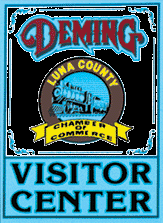Blue Origin is to Van Horn Texas as Branson is to New Mexico.
MAP: The Blue Origin launch site would be 25 miles (40.2 kilometers) north of Van Horn, Texas. Credit: Blue Origin. Click to enlarge.
Public Weighs in on West Texas Spaceport PlanBezos' Blue Origin to Set Up Rocket HQ in Washington StateDetails Emerge on Jeff Bezos' Space PlansBlue Origin Spaceport Plans are Talk of Texas TownAmazon Founder's Rocket Plans Take Flight as New Details, Images Emerge By
Leonard DavidSenior Space Writerposted: 4 January 2007ET
The secretive doings of the Blue Origin rocket team have become less guarded thanks to a first-hand account from the group’s deep-pocketed backer: Jeff Bezos of Amazon.com fame and fortune.
The quest of
Blue Origin rocketeers is to create a passenger-carrying suborbital rocket, dubbed the New Shepard.
For the first time,
details of the team’s first development flight in the New Shepard step-by-step project have been made available [
launch video]. That test took place
nearly two months ago, on the morning of November 13, 2006 – from their privately-owned
West Texas space launch site in Culberson County, Texas [
map].
Step by step
“We launched and landed Goddard - a first development vehicle in the New Shepard program,” Bezos noted Jan. 2 on the Blue Origin website. “The launch was both useful and fun. Many friends and family came to watch the launch and support the team,” he said.
The Goddard vertical takeoff and landing rocket reached a maximum altitude of roughly 285 feet (87 meters) on its first development flight [
image]. The rocket lifted off and landed upon the same pad on a set of legs. The Goddard test hop was delayed a few days due to gusting winds in the area.
“We’re working, patiently and step-by-step, to lower the cost of spaceflight so that many people can afford to go…and so that we humans can better continue exploring the solar system,” Bezos reported. “Accomplishing this mission will take a long time, and we’re working on it methodically. We believe in incremental improvement and in keeping investments at a pace that's sustainable.”
Bezos explained that “slow and steady” is the way to achieve results.
That philosophy can be seen on the Goddard test rocket itself, imbued with the words: “Gradatim Ferociter” – Latin for step-by-step, by degrees and fiercely doing so with spirit.
“We do not kid ourselves into thinking this will get easier as we go along. Smaller, more frequent steps drive a faster rate of learning, help us maintain focus, and give each of us an opportunity to see our latest work fly sooner,” Bezos said.
Reaction to the Bezos account of the Blue Origin success was provided to
SPACE.com in a statement from Patti Grace Smith, the Federal Aviation Administration’s (FAA) Associate Administrator for Commercial Space Transportation (AST) in Washington, D.C.
“Jeff Bezos and the Blue Origin










